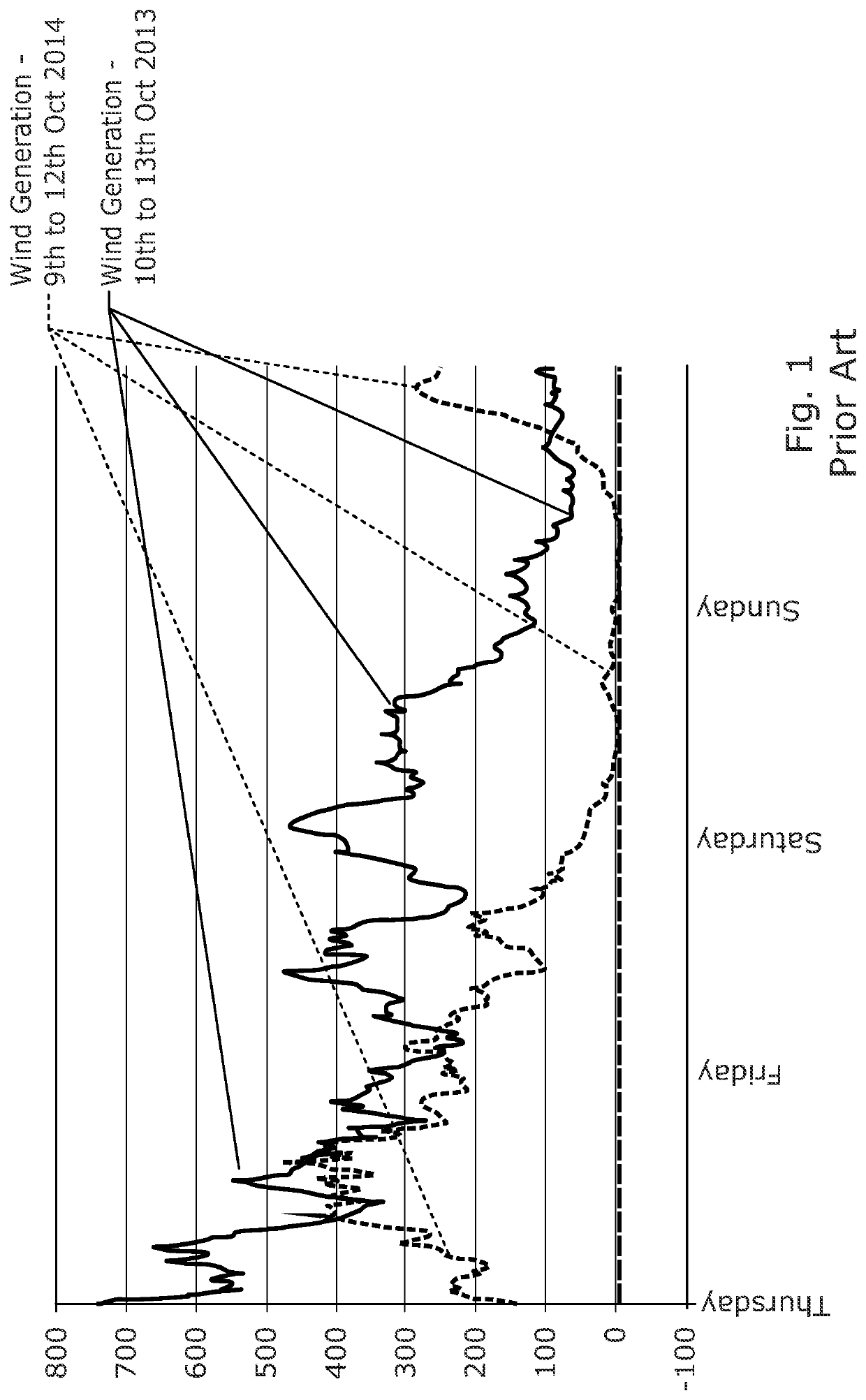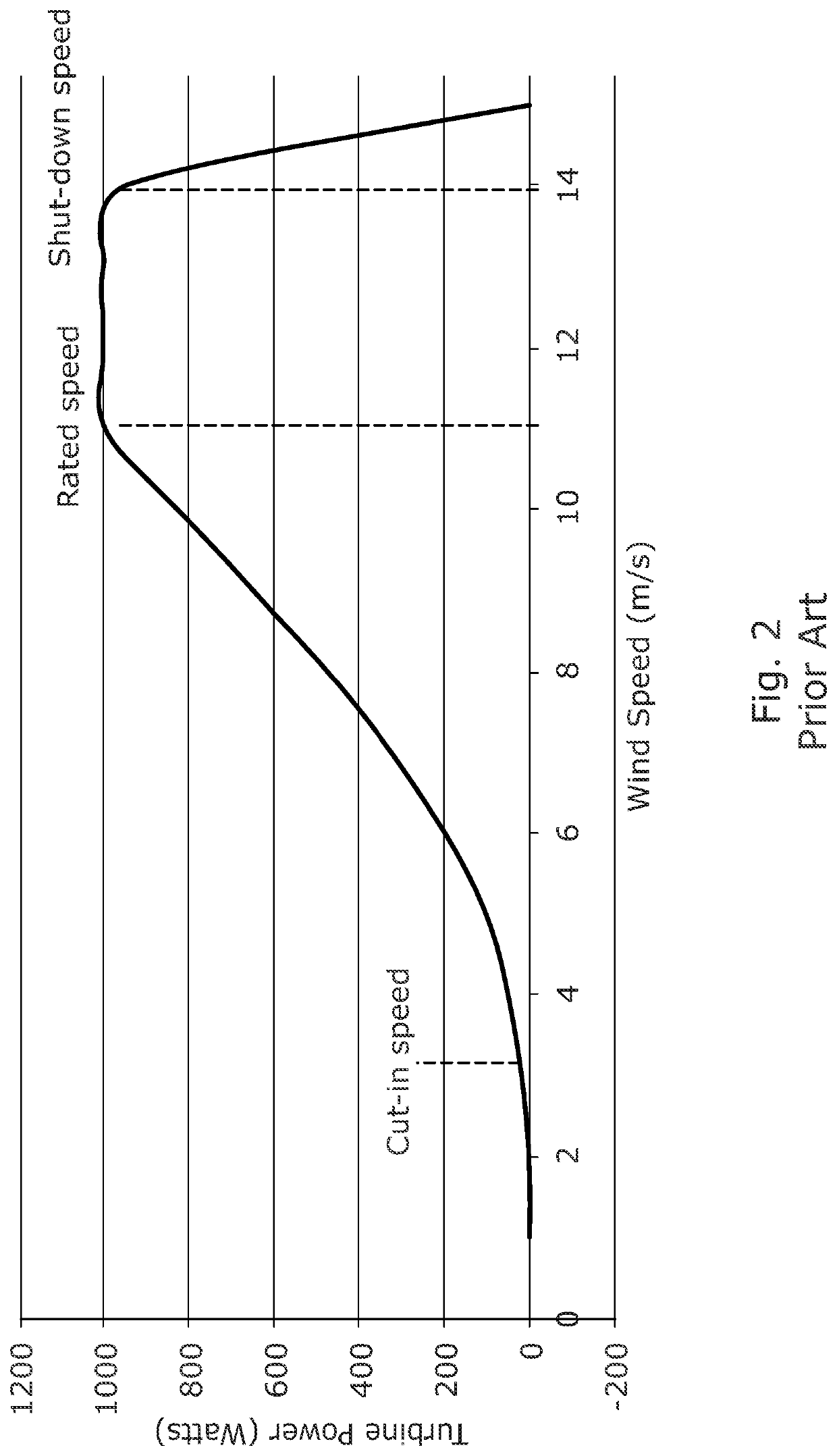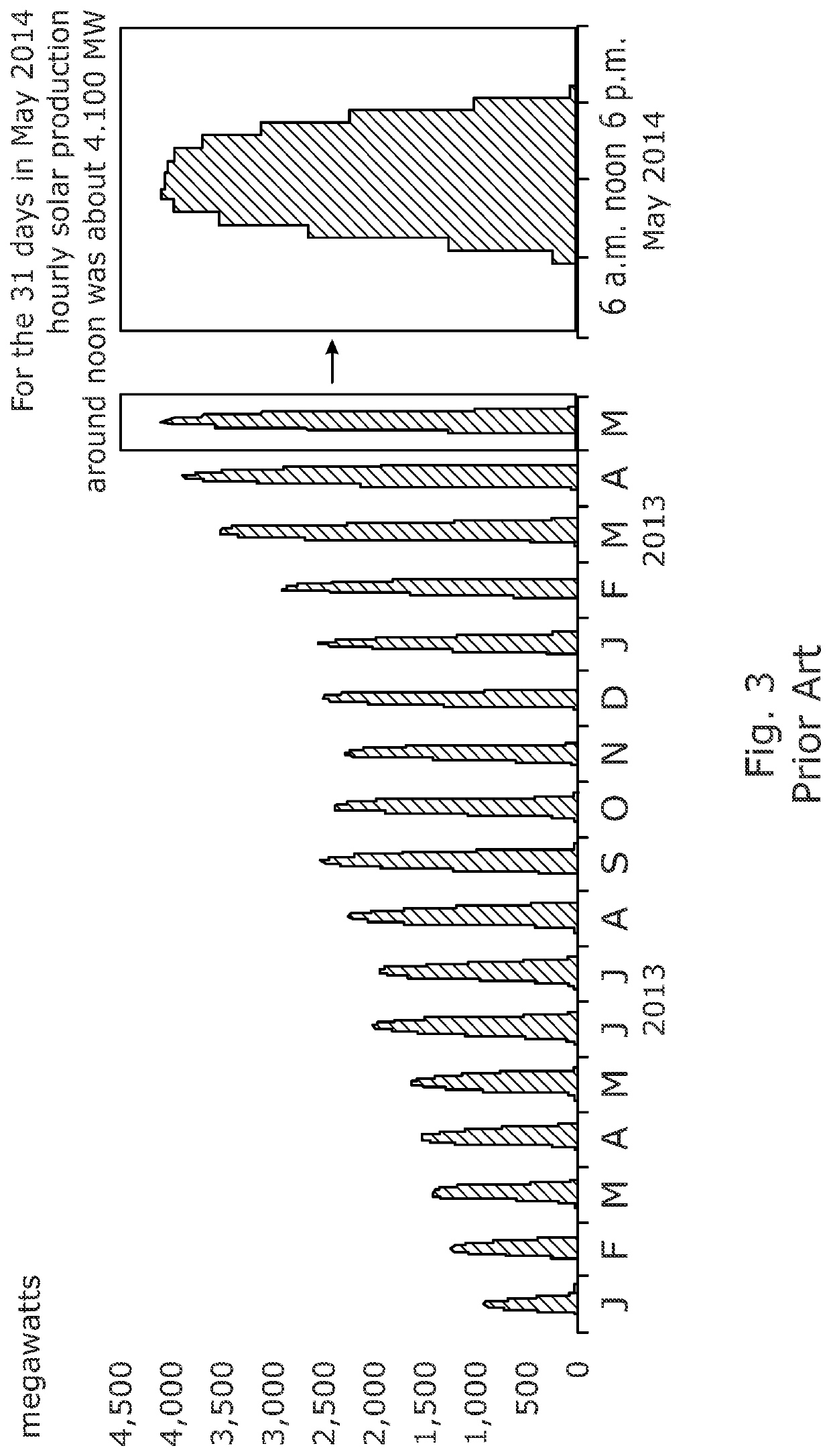Dispatchable renewable power supply
- Summary
- Abstract
- Description
- Claims
- Application Information
AI Technical Summary
Benefits of technology
Problems solved by technology
Method used
Image
Examples
embodiment 1
[0195]In a first embodiment, and with reference to FIG. 4 of the drawings, there is provided an off-grid electric vehicle (EV) charge station (10) capable of providing 100 kW dispatchable power output (PD). The off-grid electric vehicle charge station (10) comprises a base power generator (11) (also referred to as a primary power generator) in the form of a hydroelectric power generator. The hydroelectric power generator is in fluid flow communication with a water source, and comprises a turbine and generator.
[0196]The off-grid electric vehicle charge station (10) further comprises storage capacity in the form of a battery (12) (“grid battery”) electrically coupled to the base power generator (11). A secondary power generator (13) in the form of a solar power generator (comprising photovoltaic cells) is also coupled to the battery (12), and both power generators (11, 13) are configurable to generate power from their respective renewable energy sources and send the power to the batte...
embodiment 2
[0201]A second exemplary embodiment of the invention comprises the base power generator (11), the battery (12), the control module (14) and the EV charge point (15) as described above.
[0202]Where a reliable energy source is known, it is not necessary to provide a secondary power generator. For example, dams may often have a minimum water flow or spill from the reservoir in order to allow water to flow downstream, reducing the environmental impact of the dam. Therefore, there is a guaranteed water flow at all times of the year. Therefore, the base power generator (11) can be built to specification for the exact amount of water flow, and the battery (12) sized appropriately so as to provide the “off-grid”, always on, EV charging station of the present invention.
[0203]In use, the electric vehicle charge station (10) provides an off-grid, always on power source for EV vehicles and is powered entirely by renewable energy sources. The battery (12) and base power generator (11) combine to ...
embodiment 3
[0204]A third exemplary embodiment comprises commercial premises having a typical power demand during operation hours (8 am-6 pm) of 75 kW, and a maximum power demand of 95 kW. A dispatchable off-grid power supply is provided as per Embodiment 1, capable of providing 100 kW of dispatchable power.
PUM
 Login to View More
Login to View More Abstract
Description
Claims
Application Information
 Login to View More
Login to View More - R&D
- Intellectual Property
- Life Sciences
- Materials
- Tech Scout
- Unparalleled Data Quality
- Higher Quality Content
- 60% Fewer Hallucinations
Browse by: Latest US Patents, China's latest patents, Technical Efficacy Thesaurus, Application Domain, Technology Topic, Popular Technical Reports.
© 2025 PatSnap. All rights reserved.Legal|Privacy policy|Modern Slavery Act Transparency Statement|Sitemap|About US| Contact US: help@patsnap.com



